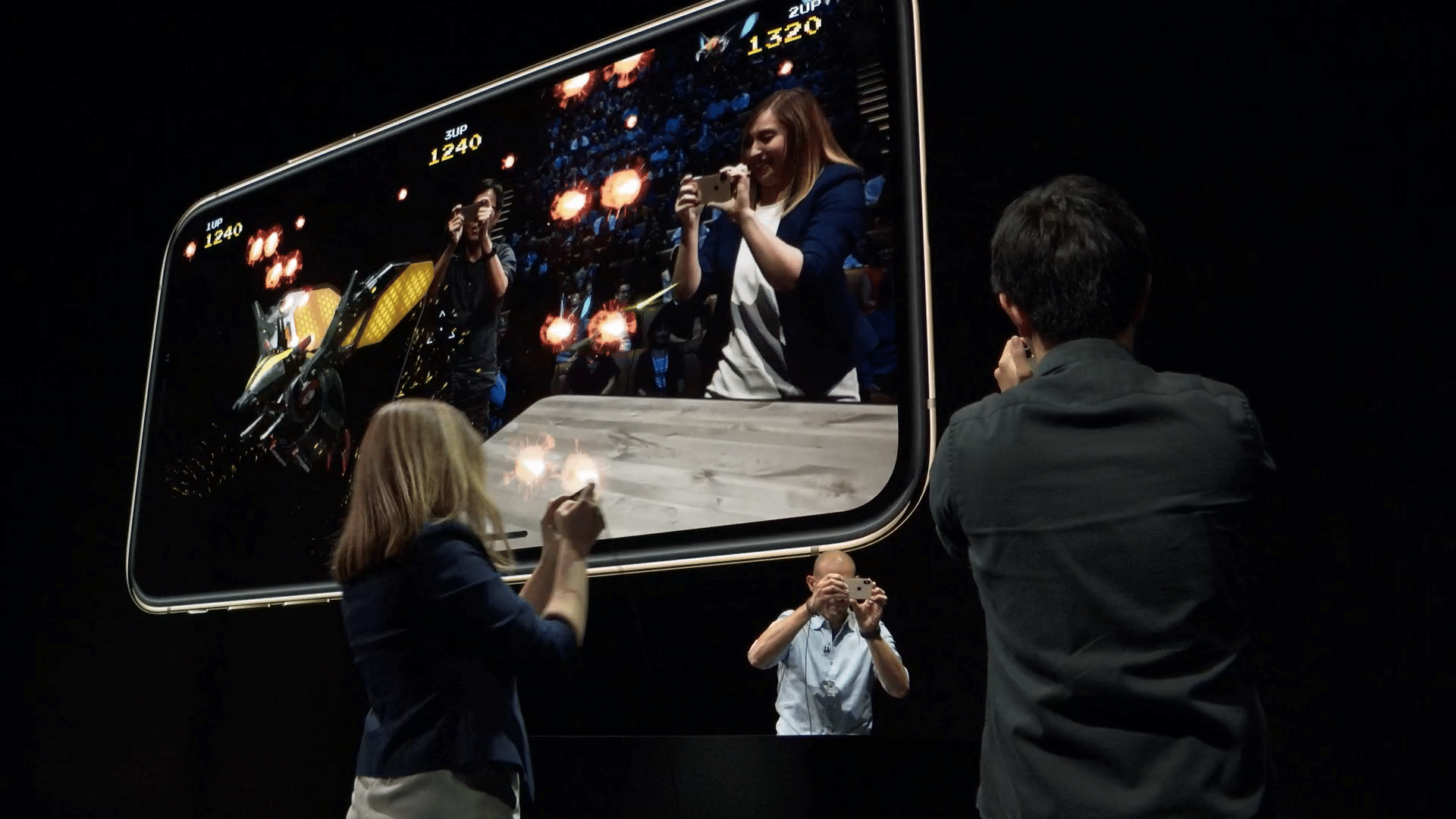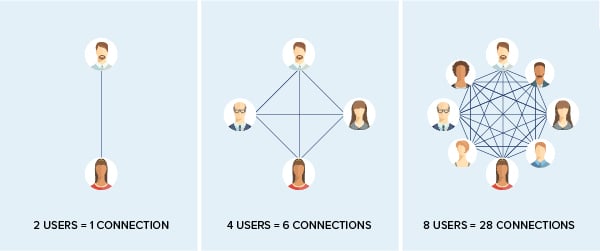
Among AR-related items at yesterday’s Apple keynote, one of the most demonstrable showings was Galaga’s AR reboot. Based on the classic arcade game and powered by ARkit 2, it’s Apple’s latest evolution in multi-player AR.
For those who missed the demo, it’s essentially a 3D version of the game in which shootable enemies fly in front players, as seen through their upheld iPhone AR interfaces. All players see the same graphics — which are positionally tracked and synchronous — and compete for points.
It utilizes ARKit 2.0’s multiplayer support to power the synchronous play, as well as the four-core GPU of the newly-announced batch of iPhones. The latter renders higher-quality graphics which adds to the AR immersion of the game, along with the stereo sound of the iPhone Xs and Xs Max.

Pros & Cons
But beyond graphics and specs, the deeper and more important angle is what multi-player will mean for AR’s functional evolution and wider-scale adoption. Like anything else, it will take time for developers to build native and compelling apps that do it justice. And there are pros and cons.
Starting with the pros, multi-player AR could accelerate AR adoption via network effect. By definition, network effect is when the value of any network grows as more nodes are added. With multi-player AR, The UX is enhanced through social connections, collaboration and competition.
Think of this like web 2.0, circa 2005. Prior to that, the web had a fairly lonely and one-dimensional UX, aside from chat rooms. Then the advent of social networks, collaboration and contribution (think: Digg, YouTube, etc.), added new dimension, appeal and use cases.

There’s also a certain amount of viral growth that comes with multi-player. Given its inherent social framework, it could bring more people into AR, thus accelerating the conversion of AR users and influencers. Word-of-mouth and social sharing can then further influence and drive adoption.
But it’s not all good news. One challenge for multi-player UX is that it could also be an adoption barrier. In other words the need for several players — all in the same place no less — creates restrictions on AR multi-player apps or games. And that could work against adoption.
“[With] mobile AR, you’re probably somewhere random in the house, at the office or on the move,” said Unity’s Tony Parisi at AWE. “Requiring someone to be in a specific place is damn inconvenient — unless the whole point is to get you there, such as Niantic’s location-based titles.”

Design Challenge
With the above pros and cons, the onus is on developers to tap into multi-player advantages while avoiding its scale-depleting tendencies. For example, is there potential for synchronous, on-site interaction plus place-shifted play (think: Words with Friends) to tap into the best of both worlds?
Another layer to this challenge is the AR delivery vehicle. As we’ve examined, apps are the heir apparent vessel for AR, given their dominance in the smartphone era. But they could hobble multi-player experiences or “pick-up” sessions with strangers, due to download friction/latency.
Web XR could be the answer. Conversely, social/multiplayer AR could support and create demand for Web XR in the “apps vs. web” platform war. This is an ongoing battle where Apple of course has a vested interest in apps, while Google’s DNA (and Amazon) pushes it toward all things web.
Lastly, as mentioned, it will be all about developers gaining native footing with multi-player AR. Since it’s a new use case, it will take a few development cycles to create experiences that are compelling enough for killer-app status (watch Niantic). We’ll be waiting and watching eagerly.
For deeper XR data and intelligence, join ARtillry PRO and subscribe to the free ARtillry Weekly newsletter.
Disclosure: ARtillry has no financial stake in the companies mentioned in this post, nor received payment for its production. Disclosure and ethics policy can be seen here.
